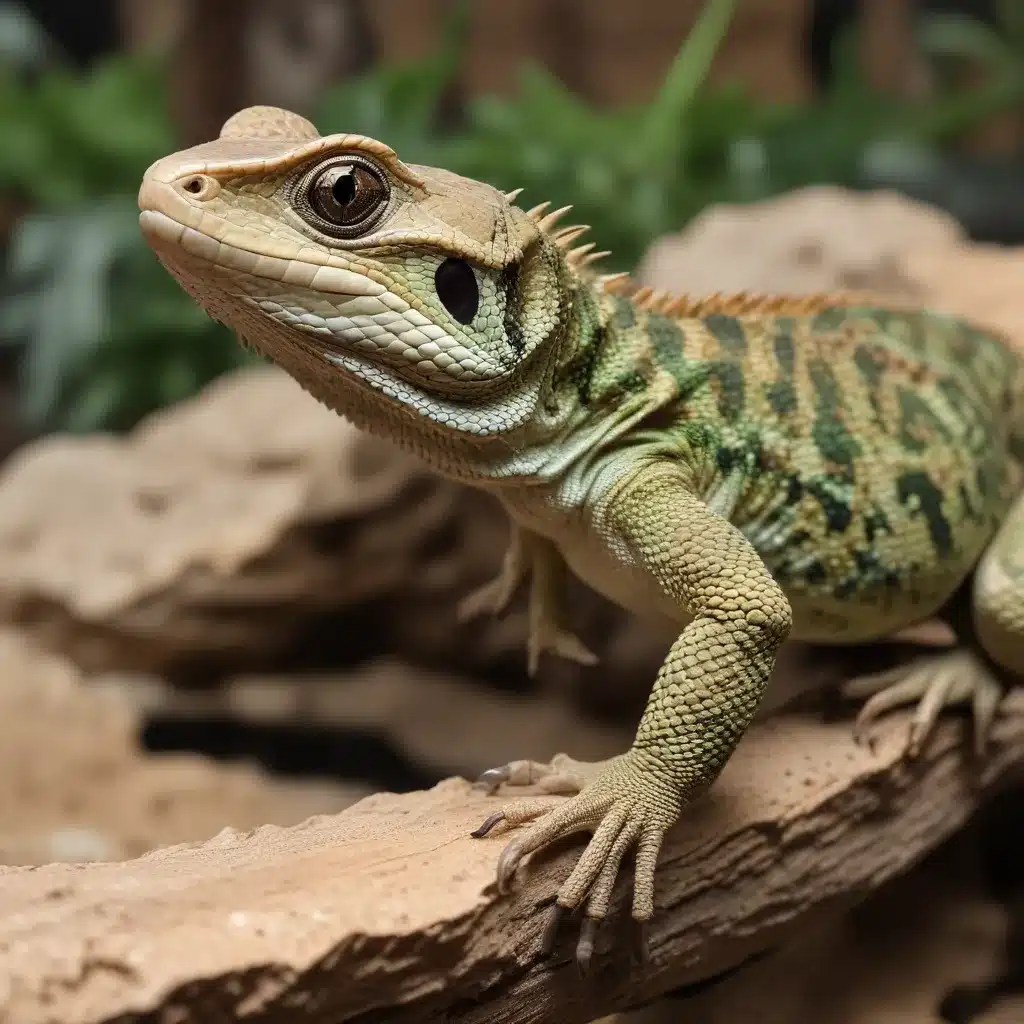
Understanding Reptile Habitat Requirements
Keeping exotic reptiles as pets requires a deep understanding of their specific habitat needs. Unlike traditional domesticated animals, reptiles are ectothermic, meaning they rely on their environment to regulate their body temperature. This fundamental difference in physiology means that the design and setup of a reptile’s enclosure is crucial for their health and well-being.
When creating a captive habitat for a reptile, it is essential to replicate the animal’s natural environment as closely as possible. This includes providing the appropriate temperature gradients, lighting, humidity levels, and substrate. Failing to meet these specialized requirements can lead to a host of health issues, from metabolic disorders to respiratory infections.
One of the key considerations in reptile enclosure design is temperature management. Many reptile species require specific basking areas and cooler retreat zones within their habitat to thermoregulate effectively. Carefully monitoring and maintaining these temperature gradients is a critical aspect of proper reptile husbandry.
Another important factor is lighting. Reptiles have unique visual and behavioral adaptations that require specific lighting conditions. Some species, such as certain snakes and geckos, may require UVB lighting to synthesize vitamin D3, which is essential for calcium metabolism and bone health. Providing the right balance of lighting is crucial for a reptile’s overall well-being.
Humidity levels are also a critical consideration for many reptile species. Certain snakes, for example, require highly humid environments to maintain healthy skin and prevent respiratory issues. Maintaining the appropriate humidity levels can be a challenging aspect of reptile care, often requiring specialized equipment and monitoring.
Customizing Enclosures for Different Reptile Species
When it comes to designing reptile enclosures, a one-size-fits-all approach simply does not work. Each species has its own unique requirements, and a successful captive habitat must be tailored to the specific needs of the individual animal.
For example, arboreal species like tree frogs and certain lizards require tall, well-ventilated enclosures with ample climbing opportunities and hiding spots. In contrast, ground-dwelling species like tortoises and certain snakes may thrive in more horizontal, spacious enclosures with deep substrate for burrowing.
Aquatic reptiles, such as certain turtle and crocodilian species, have entirely different habitat needs, requiring specialized aquatic setups with appropriate water depth, filtration, and basking areas. Failure to provide the correct aquatic environment can lead to various health problems and even death.
It is also important to consider the size of the enclosure in relation to the adult size of the reptile. Providing an appropriately sized habitat is crucial for the animal’s physical and mental well-being. Overcrowding or confining a reptile to an enclosure that is too small can lead to stress, aggression, and the development of abnormal behaviors.
Breeding Considerations for Exotic Reptiles
Successful breeding of exotic reptiles requires a deep understanding of the species’ natural history, reproductive biology, and environmental cues. Improper breeding techniques can not only endanger the health and well-being of the animals but also lead to the production of unfit or genetically compromised offspring.
One of the key considerations in reptile breeding is the maintenance of appropriate temperature and humidity levels during the breeding season. Many reptile species require specific thermal and moisture cues to initiate courtship and mating behaviors. Failing to provide these environmental conditions can result in breeding failure or the production of unviable eggs.
Another critical aspect of reptile breeding is the management of parental care. Some reptile species, such as certain snakes and lizards, exhibit complex parental behaviors, including egg-guarding, incubation, and even live-bearing of young. Disrupting these natural behaviors can have serious consequences for the offspring’s survival and development.
Reptile breeders must also be mindful of genetic diversity and the potential for inbreeding depression. Maintaining healthy, genetically diverse breeding stock is essential for producing robust and thriving offspring. Careful record-keeping, selective breeding, and the introduction of new genetic lines are all crucial components of responsible reptile breeding programs.
Navigating Legal Requirements for Exotic Reptile Sales
The sale and ownership of exotic reptiles is heavily regulated in many regions, with specific laws and guidelines governing the trade and possession of these animals. Responsible reptile enthusiasts and breeders must be familiar with the relevant local, state, and federal regulations to ensure compliance and avoid legal issues.
In general, the sale and ownership of exotic reptiles may require specialized permits, licenses, or certifications. These requirements can vary significantly depending on the species, the intended purpose (e.g., private ownership, commercial breeding, or educational display), and the geographical location.
For example, certain species of snakes, lizards, or crocodilians may be classified as “dangerous” or “restricted” and may be subject to additional permitting or even outright bans on ownership and trade. Failing to comply with these regulations can result in hefty fines, confiscation of the animals, or even criminal charges.
In addition to species-specific regulations, reptile sellers may also be required to follow specific guidelines for the transport, housing, and health documentation of the animals they sell. Proper record-keeping and adherence to these guidelines are essential for maintaining legal and ethical reptile sales operations.
Navigating the complex legal landscape surrounding exotic reptile ownership and sales can be a daunting task. Responsible reptile enthusiasts and breeders must stay informed about the latest regulations, consult with local authorities, and seek professional guidance to ensure they are operating within the bounds of the law.
Conclusion
Providing specialized captive care for exotic reptiles requires a deep understanding of their unique habitat requirements, breeding considerations, and the legal framework governing their ownership and trade. By carefully designing enclosures, implementing responsible breeding practices, and adhering to all relevant regulations, reptile enthusiasts and breeders can ensure the health, well-being, and ethical treatment of these fascinating creatures.
For those interested in exploring the world of exotic reptiles, we encourage you to visit exoticreptilesforsale.com to learn more about the available species, care requirements, and responsible ownership practices. Our team of experts is dedicated to helping reptile enthusiasts navigate the intricacies of captive reptile care and ensure a thriving and sustainable exotic pet industry.

